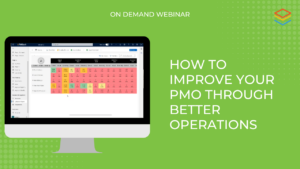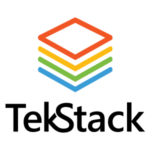
A well-functioning Project Management Office (PMO) is essential for software and IT Service organizations. It can be the difference between profitability and losing money; and between customers renewing or customers leaving.
To streamline project delivery, maximize resource efficiency, and ensure alignment with strategic goals, this blog will explore key practices for running a stronger PMO, focusing on critical areas such as project status reviews, resource management, RAID management (Risks, Assumptions, Issues, Decisions), change management, and financial management metrics.
Standardizing Project Delivery
Establishing a standardized approach across your project managers will drive consistent customer experience and allow you to contrast project results and metrics. Decide on a methodology (waterfall, agile, or hybrid); Establish project templates that can be used to quickly create new projects; agree on how to communicate to customers; document a standard set of assumptions, roles and responsibilities, internal collaboration and documentation structures.
Review Project Status on a weekly basis
Regular project status reviews are the backbone of effective project management. These reviews provide a structured opportunity to assess progress, identify potential roadblocks, and make data-driven decisions.
Establish a consistent meeting format and be sure all project managers have their projects up to date in terms of progress, status (red/green/blue), RAID items.
Focus on creating reports that are not just informative but actionable. Highlight variances, provide insights, and propose corrective actions where necessary. Visualization tools like dashboards can be incredibly effective in making complex data easily digestible.
Manage Resource Scheduling & Utilization
Resource management is critical to ensuring that projects are delivered on time and within budget. A well-managed resource pool not only boosts productivity but also prevents burnout and resource conflicts.
Conduct a weekly review of new projects or project tasks that need to be assigned and scheduled. Compare requirements with resource availability. Identify the impact that any project scheduling changes have had on resource utilization. Use capacity planning tools to forecast resource needs and avoid overallocation or underutilization.
Resources need to be held accountable for the work they are doing. Insist on weekly time entry, and time the PMO meeting recurrence so you can see the time entry information from the past week.
Try to foster a culture of flexibility where resources can be reallocated based on changing project priorities. Cross-training team members can enhance this flexibility, allowing the PMO to adapt swiftly to project demands.
RAID Management
Effectively managing Risks, Assumptions, Issues, and Key Decisions (RAID) is vital for project success. A proactive RAID management process can prevent minor concerns from escalating into major project challenges.
Keep an up-to-date RAID log for each project. This log should be regularly reviewed and discussed in status meetings to ensure that risks and issues are addressed promptly. Ideally your tool will allow the PMO to view RAID items across projects from one view. This will make it easy to assess corrective actions such as executive involvement.
Clearly identify and document dependencies, both within the project and with external entities. Regularly review these dependencies to ensure they are being managed effectively and do not become roadblocks.
Managing Change
Change is inevitable in any project, but how it’s managed can make or break the project’s success. A robust change management process helps ensure that changes are handled systematically and with minimal disruption.
Make it easy for Project Managers to communicate items that are in scope or out of scope. The best way to do this is to have a clear Statement of Work and to ensure the project manager reinforces work that is in scope or out of scope. It’s okay to do work that is out of scope, but make sure the customer understands this so you don’t create expectations or bad habits. Get customers used to signing change requests, even if they are $0 efforts.
It should be easy for a project manager to generate a change request document so that it’s not an onerous effort that they prefer to avoid doing.
Financial Management Metrics
Financial management is a critical aspect of running a PMO. Accurate tracking of financial metrics ensures that projects stay within budget and deliver expected financial value.
Implement tools for real-time budget tracking. This allows for immediate identification of budget variances and enables timely corrective actions. Key metrics around this are in comparing budgeted, actual, and estimate at completion metrics. This can be done for effort (we recommend using hours, not days), and costs.
Use earned value to integrate project scope, schedule, and cost data to assess project performance and progress. This provides a clear picture of whether the project is on track in terms of budget and timelines.
In Conclusion
Running a stronger PMO requires a conscious approach to managing all aspects of project delivery. By focusing on structured project status reviews, efficient resource management, proactive RAID management, disciplined change management, and robust financial oversight, your PMO can become a cornerstone of project success and strategic alignment. Implementing these practices not only improves project outcomes but also enhances the overall maturity and effectiveness of the PMO within your organization.
About TekStack
TekStack is here to help service delivery teams. Its Delivery module is a Professional Services Automation platform built on Microsoft Cloud. It allows teams to create standardized project templates, track project progress, assign resources, track resource utilization, and enable better customer communication. Essentially, it gives Professional Services teams all the tools and insights needed to drive better profitability and customer experience.








